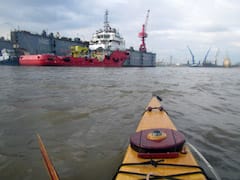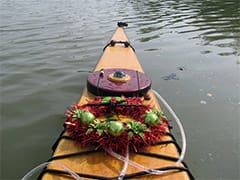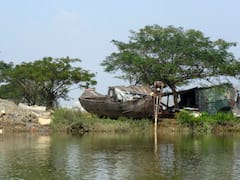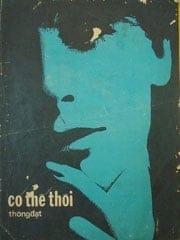Made some more longer paddlings (20 ~ 25 km) to get to really know her, my newly – built Serene – 2. It’s not until now that I could get myself familiarized with the boat’s primary stability, which could be really “frightening” to most novice paddlers. In reality, Serene – 2 is “more stable” compared to Serene – 1, but with a much higher free board, the secondary stability comes a bit later, to assure that everything is alright!
Actually, I’m a bit concerned about the boat’s primary stability, cause it has lots of V – bottom the under side. I would need to trail the kayak in its full capacity, to really make sure that the boat reaches its expected stability when fully – loaded with gears for a multiple – days paddling trip. The “fearful, uneasy feeling” caused by the low primary stability should not be taken for granted at all, even when I know that it’s safe.
Cause you would virtually going nowhere when all the time, you’re just worrying about it, worrying that something (a potential capsize) would happen. I’m pretty sure that the boat would be fine at its designed displacement, but only trialling would tell precisely. Looking back at all my boat building, boat playing times, lots of fearful moments, lots of self – doubting, self – disappointments, self – blaming, etc…
But that’s the nature of boating things, of “adventures” on the water. It requires lots of practicing and improving, to make sure that everything is right, that everything just works. My paddling performance is really really bad lately, with very little training ever since my last 9 days paddling trip in June. Obviously, something need to be improved here, and that would be among my resolutions in the coming new year! 😀












































